Deborah J. Ross's Blog, page 126
January 12, 2015
COVER REVEAL: GIFTS OF DARKOVER
Here's the beautiful cover, designed by Dave Smeds:

Table of Contents:
Introduction: Darkover, An Evolving World, by Deborah J. Ross (editor)Learning to Breathe Snow, by Rosemary Edghill and RebeccaFox
Healing Pain, by Jane M. H. Bigelow Blood-kin, by Diana L. Paxson The Tower, by Jeremy Erman Stonefell Gift, by Marella Sands Compensation, by Leslie Fish Green Is The Color Of Her Eyes So Blue, by

Table of Contents:
Introduction: Darkover, An Evolving World, by Deborah J. Ross (editor)Learning to Breathe Snow, by Rosemary Edghill and RebeccaFox
Healing Pain, by Jane M. H. Bigelow Blood-kin, by Diana L. Paxson The Tower, by Jeremy Erman Stonefell Gift, by Marella Sands Compensation, by Leslie Fish Green Is The Color Of Her Eyes So Blue, by
Published on January 12, 2015 01:00
January 10, 2015
How to Succeed as a Writer in 2015
As the year begins, I — like many, many writers — contemplate what I can do to further my career.
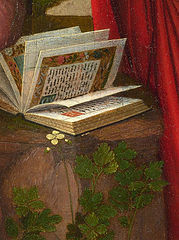 This applies whether we are traditionally published or self-published, or hybrids, partaking of both worlds. Publishers aren’t doing much in the way of promotion except for their biggest sellers, which leaves out most of us. More and more, traditionally published authors must do the same sorts of publicity as those who are going it alone. We are the ones to set up bookstore signings, place ads, plan blog hops, execute campaigns on social media, offer book giveaways, etc.
This applies whether we are traditionally published or self-published, or hybrids, partaking of both worlds. Publishers aren’t doing much in the way of promotion except for their biggest sellers, which leaves out most of us. More and more, traditionally published authors must do the same sorts of publicity as those who are going it alone. We are the ones to set up bookstore signings, place ads, plan blog hops, execute campaigns on social media, offer book giveaways, etc.Success all boils down to having a product to sell, and in this case it’s the best books we can write. Tell a whopping good story in clear, accessible prose. But that’s not sufficient in itself. Many, many wonderful books fail to garner a readership (and many talented writers find themselves without a publisher because their sales are lousy). This is so unfair, I could weep.
The challenge is connecting those “best books” with readers who will adore them. We can’t count on readers wandering into a cozy local independent bookstore, where they will see our latest proudly displayed on the “New And Recommended” shelf. The internet is flooded with announcements and exhortations to Buy My Book! that readers have become deaf. Self-pimpage becomes not only monotonous but a turn-off. They make many potential buyers (like me) disinclined (to put it mildly) to even take a look at those books.
So if writing a fabulous story isn’t enough and relentlessly publicizing it on every social medium yet devised turns readers off, what else can we do? To answer this, I took a look at what factors do contribute to a writer’s success.
Write a book (or series) with lots of salacious sex, preferably kinky.Write a YA series with kid wizards/dragons that’s turned into a hit movie series.Write epic fantasy with tons of gore that’s turned into a hit television series.Write a dystopic YA series that’s turned into a hit movie series.Write many, quickly released Mary Sue paranormal romances.Write an epic fantasy the like of which nobody has ever read before, preferably with movie contracts to come, although these need not occur in your own lifetime.Write lots of horror movies that are turned into hit movies.Write gritty police procedurals, with or without sexy medical examiners, that are turned into a hit television series.Write a series with romance and vampires, YA or adult, that is turned into a hit television series.Write tie-in novels to wildly successful movie/s.Write anything Peter Jackson turns into a movie.
Is there a trend here? Genre fiction is a pretty small piece of the pie, although romance and mystery have their devoted followers, just as science fiction does. Kids read omnivorously across genre, but they read stories that grab them. Most of the preteen kids I know are avid readers, but they read print books, either from the library or school book fair, which pretty much eliminates them as an audience for self-published authors.
I had great hopes that the internet would transform how we find out about and buy books. In some ways, it has done so for the latter, although I am becoming increasingly leery of the power of a few enormous online ebook retailers to pressure publishers, writers being next in line. I once believed that social media, writers’ and reviewers’ blogs and the like, would make it easier for readers to connect with books they might not otherwise have discovered. As far as I can tell, this has mostly failed to live up to its promise. I suspect it’s because we are preaching to the choir. Folks who read our blogs or follow us on Twitter (etc.) already read in our genre (and know us by name or some other genre-community association). Today, the best I can hope is that we are still in a “shakedown” phase and that eventually, the internet will indeed become a medium that connects readers and books.
It seems to me we have a choice: to chase “what sells big” (much of which is beyond our control); to flog self-promotion on the web (a recipe for frustration) or to admit that what we love to write may not be commercially successful on the scale of NYTimes Bestsellers. That’s the only option that offers me any degree of satisfaction, let alone sanity. There is no guarantee I will be content, and I almost certainly will not be rich, but if I go the way of imitating someone else’s vision or spending all my energy trying to get Hollywood interested, or writing Buy My Book! posts for hours every day, then I will make myself miserable and what I do write when I can write will be crap.
I continue in my belief that if I write from the heart — not only my fiction but my blog essays — then eventually my words will find a readership. Folks who like what I have to say will seek out my books. It probably doesn’t work that way, but you never know. At least I’ll be a success in being happy. And I’ll have the best readers I could ask for.
P.S. If you're a movie or television producer, why yes, my agent would be delighted to talk with you.
Published on January 10, 2015 01:00
January 8, 2015
Winter Reading, part 3
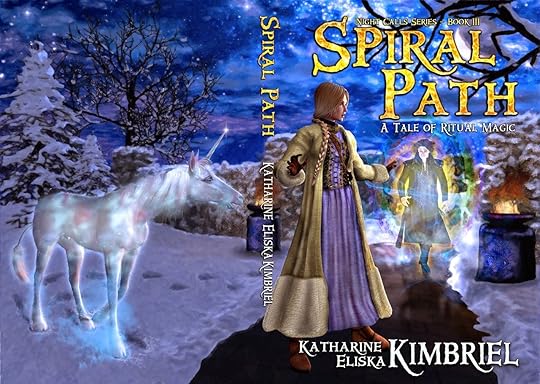 The Spiral Path: A Tale of Ritual Magic, by Katharine Eliska Kimbriel (Book View Café, 2015). In this third book of “Night Calls,” the adventures of Alfreda Sorensson, Katharine Eliska Kimbriel has brought originality and insightfulness to the series. Set in an alternate, magical Colonial America, these are no ordinary Young Adult fantasies, and Allie is no ordinary heroine. In Allie’s confident and inimitable voice, Kimbriel weaves together the necessary survival skills of living in the forested Michigan frontier. One of the things I like best about her is how amazingly competent she is - even when she’s in over her head. Instead of creating an independent heroine by separating her from her family and community, Kimbriel weaves together the lives of Allie, her lively and affectionate family, and the people in their small town. Once Allie’s magical abilities have manifested, she also acquires a “teacher in the Wise Arts,” an older kinswoman. As part of her studies, Allie studies midwifery, never guessing that she will be called to use her wild, untutored magic to deliver the foal of a unicorn. The birth of the unicorn forces Allie to leave her family and home because she is now the target of supernatural forces she has not yet acquired the power and training to defend against. To protect her and to speed up the process of learning, she travels to New York to study at a school of ritual magic. I jokingly call this “Allie at Hogwarts,” but The Spiral Path is anything but an imitation of the Harry Potter novels. Allie may not yet be adept in ritual magic, but she is competent in a host of other areas, able to think on her feet, draw upon her strengths, and act with courage and compassion. She is in the process of becoming an extraordinary and powerful “practitioner,” not because of inborn talent (although she has that in spades) but through knowledge, hard-won experience, and keen intelligence. I wish these novels had been around when I was a young teenager, but I’m glad I can read them now, nodding, “Yes, yes!” as Allie handles and grows from every twist and turn of the story. I can think of no better role model for Young Adults, boys as well as girls. Highly recommended.
The Spiral Path: A Tale of Ritual Magic, by Katharine Eliska Kimbriel (Book View Café, 2015). In this third book of “Night Calls,” the adventures of Alfreda Sorensson, Katharine Eliska Kimbriel has brought originality and insightfulness to the series. Set in an alternate, magical Colonial America, these are no ordinary Young Adult fantasies, and Allie is no ordinary heroine. In Allie’s confident and inimitable voice, Kimbriel weaves together the necessary survival skills of living in the forested Michigan frontier. One of the things I like best about her is how amazingly competent she is - even when she’s in over her head. Instead of creating an independent heroine by separating her from her family and community, Kimbriel weaves together the lives of Allie, her lively and affectionate family, and the people in their small town. Once Allie’s magical abilities have manifested, she also acquires a “teacher in the Wise Arts,” an older kinswoman. As part of her studies, Allie studies midwifery, never guessing that she will be called to use her wild, untutored magic to deliver the foal of a unicorn. The birth of the unicorn forces Allie to leave her family and home because she is now the target of supernatural forces she has not yet acquired the power and training to defend against. To protect her and to speed up the process of learning, she travels to New York to study at a school of ritual magic. I jokingly call this “Allie at Hogwarts,” but The Spiral Path is anything but an imitation of the Harry Potter novels. Allie may not yet be adept in ritual magic, but she is competent in a host of other areas, able to think on her feet, draw upon her strengths, and act with courage and compassion. She is in the process of becoming an extraordinary and powerful “practitioner,” not because of inborn talent (although she has that in spades) but through knowledge, hard-won experience, and keen intelligence. I wish these novels had been around when I was a young teenager, but I’m glad I can read them now, nodding, “Yes, yes!” as Allie handles and grows from every twist and turn of the story. I can think of no better role model for Young Adults, boys as well as girls. Highly recommended.Longbourne, by Jo Baker (Vintage, 2014). This is one of the most delightful riffs on Pride and
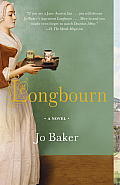 Prejudice I’ve come across. It’s not a mash-up, strictly speaking. No monsters or supernatural beings of any sort parade through the hallways of the Bennett family home. Instead, Baker takes us Downstairs (as in Upstairs, Downstairs) to flesh out the lives of the servants, both those mentioned in the Austen novel and others that are entirely her own invention but just as appropriate and real. She does it so well that this novel can be read and enjoyed by those without any familiarity with the source. However, it is not Austenian through-and-through. Baker has her own writing style, one I found delicious and almost poetic in its rhythm, and she does not restrict her focus to the social and marital concerns of the Bennett daughters. She begins there, but expands to the larger world and the brutal realities of the poor in a nation at war. One chapter we’re in Longbourne, comfortable and civilized, and the next we’re in the middle of a Bernard Cornwell “Sharpe” novel, slogging through the frozen mud of Spain with Napoleon’s army at our heels, quite a rude shock, I should imagine, if you were expecting everything to be tea and crumpets (did they have crumpets in Austen’s time?) Even so, this is a story of love and loyalty, lost and regained. I loved it, completely apart from the Austen inspiration, and will look for her other work.
Prejudice I’ve come across. It’s not a mash-up, strictly speaking. No monsters or supernatural beings of any sort parade through the hallways of the Bennett family home. Instead, Baker takes us Downstairs (as in Upstairs, Downstairs) to flesh out the lives of the servants, both those mentioned in the Austen novel and others that are entirely her own invention but just as appropriate and real. She does it so well that this novel can be read and enjoyed by those without any familiarity with the source. However, it is not Austenian through-and-through. Baker has her own writing style, one I found delicious and almost poetic in its rhythm, and she does not restrict her focus to the social and marital concerns of the Bennett daughters. She begins there, but expands to the larger world and the brutal realities of the poor in a nation at war. One chapter we’re in Longbourne, comfortable and civilized, and the next we’re in the middle of a Bernard Cornwell “Sharpe” novel, slogging through the frozen mud of Spain with Napoleon’s army at our heels, quite a rude shock, I should imagine, if you were expecting everything to be tea and crumpets (did they have crumpets in Austen’s time?) Even so, this is a story of love and loyalty, lost and regained. I loved it, completely apart from the Austen inspiration, and will look for her other work.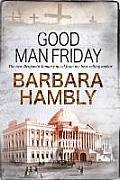 Good Man Friday, by Barbara Hambly (Severn, 2014). I have adored the Benjamin Friday books ever since Free Man of Color came out in 1998, and am thrilled that Severn House is continuing their publication. Each one is a gem, an engaging story that brings to life a not-very-well explored chapter in American History (1830s New Orleans), with all the layers of social and political issues vividly portrayed through the experiences of the characters. Benjamin January is a “free man of color,” his skin as dark as his African father, and his mind as keen as any detective’s. Trained as a surgeon in France, he finds himself unable to practice medicine, so he earns his living playing piano at various evening entertainments in the homes of white folk, and also occasionally solves a mystery. Here he is enlisted by his sister’s white protector to find a friend who has gone missing in what will become Washington D.C. Washington is nothing like the city of today; it’s hot, bug-ridden, and swampy, but the politics are just as dirty as ever. Edgar Allan Poe makes a guest appearance, helping January solve a most excellent mystery (and in the process deciding to forgo a job as a postmaster in favor of his own writing!)
Good Man Friday, by Barbara Hambly (Severn, 2014). I have adored the Benjamin Friday books ever since Free Man of Color came out in 1998, and am thrilled that Severn House is continuing their publication. Each one is a gem, an engaging story that brings to life a not-very-well explored chapter in American History (1830s New Orleans), with all the layers of social and political issues vividly portrayed through the experiences of the characters. Benjamin January is a “free man of color,” his skin as dark as his African father, and his mind as keen as any detective’s. Trained as a surgeon in France, he finds himself unable to practice medicine, so he earns his living playing piano at various evening entertainments in the homes of white folk, and also occasionally solves a mystery. Here he is enlisted by his sister’s white protector to find a friend who has gone missing in what will become Washington D.C. Washington is nothing like the city of today; it’s hot, bug-ridden, and swampy, but the politics are just as dirty as ever. Edgar Allan Poe makes a guest appearance, helping January solve a most excellent mystery (and in the process deciding to forgo a job as a postmaster in favor of his own writing!) 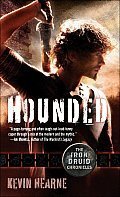 Hounded , by Kevin Hearne (Del Rey, 2011). This is the first in the “Iron Druid” series, a lively,fast-paced urban fantasy complete with Greek gods, witches, spells and counter spells, a vampire or two, a telepathic dog, and oh yes, an extremely long-lived, street-smart, drop-dead sexy druid. The best part is there are more books in the series.
Hounded , by Kevin Hearne (Del Rey, 2011). This is the first in the “Iron Druid” series, a lively,fast-paced urban fantasy complete with Greek gods, witches, spells and counter spells, a vampire or two, a telepathic dog, and oh yes, an extremely long-lived, street-smart, drop-dead sexy druid. The best part is there are more books in the series. 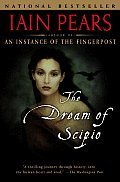 The Dream of Scipio, by Iain Pears (Riverhead, 2002). This historical novel takes place in multiple, interwoven times: the 400s, when a philosopher turned general struggles to preserve the last remnants of Roman civilization in France; the 1300s, when fragments of writings from the earlier period become a bone of contention in a divided Roman Catholic Church; and the mid 20th century, as France once again falls to an invader, and the scholar who has researched the previous time periods must make a terrible choice. Each time period comes to life through its characters, and for me the best part was the role of the women. In Roman France, Manlius studies philosophy with an extraordinary woman scholar; in early Renaissance France, women inspire and conspire; and in modern times, the plight of a Jewish woman, a dynamic painter, forces the scholar to confront the realities of the Nazi occupation. The book is interesting, engaging, and well-done, with the threads running through time – faithfully understood or lost and misinterpreted – forming a wonderful structure.
The Dream of Scipio, by Iain Pears (Riverhead, 2002). This historical novel takes place in multiple, interwoven times: the 400s, when a philosopher turned general struggles to preserve the last remnants of Roman civilization in France; the 1300s, when fragments of writings from the earlier period become a bone of contention in a divided Roman Catholic Church; and the mid 20th century, as France once again falls to an invader, and the scholar who has researched the previous time periods must make a terrible choice. Each time period comes to life through its characters, and for me the best part was the role of the women. In Roman France, Manlius studies philosophy with an extraordinary woman scholar; in early Renaissance France, women inspire and conspire; and in modern times, the plight of a Jewish woman, a dynamic painter, forces the scholar to confront the realities of the Nazi occupation. The book is interesting, engaging, and well-done, with the threads running through time – faithfully understood or lost and misinterpreted – forming a wonderful structure.Sword-Bound, by Jennifer Roberson (DAW. 2013). Jennifer Roberson is an author I will happily
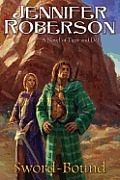 follow across genres and series. The “Sword Dancer” books are among my favorites, since I picked up the first one when I was actively studying martial arts and networking with other martial artists (although the only sword form I studied amounted to a weekend of tai chi sword at one of the women’s martial arts camps). This is the seventh installment of the adventures of Tiger and Del, two superb swordspeople from very different traditions and with very different temperaments. By this time, many of these differences have been ironed out or at least well enough understood by both that they form a great team. They’ve attempted to settle down in a remote valley with their toddler daughter and Tiger’s 20-something son from a decades-ago liaison. What begins as the son wanting an adventure quickly turns into a hunt (Tiger being the prey, not the hunter), twists and turns into the past. Throughout it all, the characters grapple with the demands of family and parenthood, the reality of aging in a culture that demands constant defense of one’s reputation, and the choice between magic and life. I think this is the best yet in the series, and one that can easily be read on its own. But the rewards of starting from the beginning are great indeed, so go out and buy them all!
follow across genres and series. The “Sword Dancer” books are among my favorites, since I picked up the first one when I was actively studying martial arts and networking with other martial artists (although the only sword form I studied amounted to a weekend of tai chi sword at one of the women’s martial arts camps). This is the seventh installment of the adventures of Tiger and Del, two superb swordspeople from very different traditions and with very different temperaments. By this time, many of these differences have been ironed out or at least well enough understood by both that they form a great team. They’ve attempted to settle down in a remote valley with their toddler daughter and Tiger’s 20-something son from a decades-ago liaison. What begins as the son wanting an adventure quickly turns into a hunt (Tiger being the prey, not the hunter), twists and turns into the past. Throughout it all, the characters grapple with the demands of family and parenthood, the reality of aging in a culture that demands constant defense of one’s reputation, and the choice between magic and life. I think this is the best yet in the series, and one that can easily be read on its own. But the rewards of starting from the beginning are great indeed, so go out and buy them all!
Published on January 08, 2015 01:00
January 5, 2015
GUEST BLOG: Trans Folk, Hormones, and Stress
 In the wake of the suicide of a trans youth, I offer this article from the excellent blog, Open Minded Health. It provides evidence that trans people have a better quality of life when their physiology matches their gender identity.
In the wake of the suicide of a trans youth, I offer this article from the excellent blog, Open Minded Health. It provides evidence that trans people have a better quality of life when their physiology matches their gender identity.Article Review: Hormonal Treatment Reduces Psychobiological Distress in Gender Identity Disorder, Independently of the Attachment Style (used with permission).
Summary: Research now indicates that cross-sex hormone therapy is associated with a lower cortisol awakening response in trans people, regardless of attachment style. Many confounding variables, however, were present in this study.
Transgender people have long asserted that gender dysphoria can be extremely distressing and that transition, including hormone therapy, helps relieve that dysphoria. Hormone therapy is known to improve self-reported quality of life, as measured by questionnaire. To my knowledge no other study has looked at stress-related biological factors in trans people. Biological factors are important because self-report is notorious for validity problems. This study looked at one such biological factor, called the cortisol awakening response.
What is the cortisol awakening response? Readers of the blog may remember the last time I spoke about cortisol (paragraph #2). For those who don’t remember…. cortisol is a “stress hormone.” When we’re stressed, whether by speaking in public or running from a lion, cortisol is released. It helps our body be ready for immediate survival by increasing blood sugar and helping with metabolism. High cortisol levels over a long period of time can have many negative effects on health, including weakening the immune system. The cortisol awakening response is part of cortisol’s daily cycle, when cortisol blood levels spike about 20-30 minutes after waking in the morning. The cortisol awakening response is larger in stressed people than in non-stressed people and can be affected by many things, including burn out, fatigue, aspirin, and sleep schedule. Cortisol awakening response is thought to be a good indicator of general stress levels and as a good indicator for stress-related disease risks.
Participants in this study were 70 trans people seen at the Gender Identity Unit of the University of Bari Psychiatric Department, roughly 64% trans women. All the participants had the same hormonal treatment; transdermal estradiol gel and cyproterone acetate (an anti-androgen) for trans women, intramuscular testosterone esters for trans men. They were assessed before hormone therapy and 12 months after starting hormone therapy. There was no significant difference in age, education, or occupation between the two groups.
The researchers measured perceived stress (a self-report of how stressed a person feels) in addition to the cortisol awakening response. The cortisol awakening response was measured by a blood test at 8:00am on three consecutive days, 1 hour after waking.
The results were striking. Before treatment, both perceived stress and cortisol levels were above the “normal” range. After twelve months of hormone therapy, both were much lower and back within normal ranges. There were no statistically significant differences between trans men and trans women.
However there are a number of confounds for this study. Cortisol levels vary with sex hormones. For example, the cortisol levels of menstrual women will vary depending on which part of the menstrual cycle they’re in. Could cross-sex hormone therapy have caused this change in cortisol levels? Maybe, but then I’d expect there to be a difference between the trans men and trans women in this study and there weren’t.
The researchers also did not appear to attempt to control for other factors which could have impacted the cortisol awakening response. Changes in sleep patterns (e.g., naps) or sleep quality (e.g., a noisy environment) have effects on the cortisol awakening response. As far as I can tell the researchers did not screen for these changes.
Cortisol and stress were not the only things measured in this study. The researchers also looked at attachment styles. Attachment styles are a psychological concept. The idea is that when we are children our interactions with parents, and how they respond to our needs, affects the type of “attachment” we have. Attachment styles are secure or insecure. A secure attachment often results in happy adult relationships. Insecure attachments include avoidant, anxious, and unresolved/disorganized styles. Attachment styles may influence how we respond to stress, so they could have been a confound in this study if not examined.
The researchers determined the attachment style of the participants with a structured interview. They found that trans people are more likely to have an insecure attachment (70%) than the general population with no psychiatric diagnoses (44%). Attachment style did not, however, appear to be correlated with cortisol awakening response or perceived stress.
In other words, the relationship trans people have with their parents did not appear to affect the stress-reducing effects of hormone therapy.
I admit I do not really understand why these researchers chose to examine attachment style in this study. While I think that knowing attachment styles may be useful for therapy, or for the development of effective variations on therapies for trans people, I don’t feel that the inclusion of attachment style was sufficiently justified in this study. Why look at attachment and not, for example, socioeconomic status or social support? I would think either of those would be more likely to have an impact on stress levels than attachment.
On the whole, I think that the cortisol results of this study are decent validation of the anecdotal evidence from trans people themselves, but that the exploration of attachment style in this context is a red herring.
The abstract is publicly available.
Published on January 05, 2015 11:41
January 3, 2015
[personal] 2015 Goals/Wishes, take 2
 Priority stuff: work on emotional and physical health. I'm in the midst of a round of doctor visits, most of which are turning out well, and exercising more. Hope to sleep better and lose a bit of weight. The emotional stuff is tricky because I got slammed by a whole series of PTSD-triggering stresses last year and was so busy with the crises of the moment that I didn't attend carefully enough to my inner life. I know how to do this, I just didn't have a chance to catch my breath, so to speak, in 2014.
Priority stuff: work on emotional and physical health. I'm in the midst of a round of doctor visits, most of which are turning out well, and exercising more. Hope to sleep better and lose a bit of weight. The emotional stuff is tricky because I got slammed by a whole series of PTSD-triggering stresses last year and was so busy with the crises of the moment that I didn't attend carefully enough to my inner life. I know how to do this, I just didn't have a chance to catch my breath, so to speak, in 2014.NOBODY IS ALLOWED TO DIE OR BE SERIOUSLY INJURED IN 2015.
Writing goals/wishes/hopes depend on how well body and psyche are doing.
Write: Darkover book under contract, get back to parallel contract and on spec novels
Edit: Darkover anthology
Publish: 2 collections and an original sf/mystery novel through BVC
Learn how to use CreateSpace and publish the above in POD
Figure out how to put books up on Kobo, Smashwords, Google Play, etc. Notice I put this last as they are the most intimidating.
I'd love to hear from you about what you hope for in 2015.
The photo of hiking in the Dolomites was taken by my dear friend Cleo Sanda, who died in a boating accident in 2013.
Published on January 03, 2015 12:12
January 2, 2015
What's that female elf doing in the movie, anyway?
I've had a number of discussions with friends about the role of Tauriel in Peter Jackson's Hobbit movies. I understand and sympathize with the objections that she was not given a more substantial role. The movie certainly fails the Bechtel Test (but so did the book). Some saw her as no more than a love interest. Others pointed out that it's hard to add a completely new character with real agency without changing the plot too much. She could have been the one to kill Azog, but then she'd be a repetition of Eowyn in The Lord of the Rings.
All these were intellectual arguments to me. On an emotional level, I adored Tauriel, although I could not articulate why. Then I read this interview with Evangeline Lilly, who played Tauriel, and bingo, yes, exactly.
All these were intellectual arguments to me. On an emotional level, I adored Tauriel, although I could not articulate why. Then I read this interview with Evangeline Lilly, who played Tauriel, and bingo, yes, exactly.
She kind of, in my mind, becomes the voice of the audience. She speaks out what the audience is thinking and feeling, and that is such a satisfying thing, I know as an audience member when I’m watching a movie, I grab hold of that character because I need to hear it. I need them to say what is going on in my head. And Tauriel does that through the whole film.... I love that she says things like, “When did we allow evil to become stronger than us?”...
She's the Arwen of The Hobbit. Again, some folks are outraged one way or another about that character and the ways Jackson did or did not empower her. At her best, she is also the voice of the audience, our hope, our yearning for love as a redemptive power, our faith in the best part of people, our understanding of the choices of mortality and humanity. Tauriel does that for me, too.
Everyone's mileage varies.
Published on January 02, 2015 01:00
I've had a number of discussions with friends about the r...
I've had a number of discussions with friends about the role of Tauriel in Peter Jackson's Hobbit movies. I understand and sympathize with the objections that she was not given a more substantial role. The movie certainly fails the Bechtel Test (but so did the book). Some saw her as no more than a love interest. Others pointed out that it's hard to add a completely new character with real agency without changing the plot too much. She could have been the one to kill Azog, but then she'd be a repetition of Eowyn in The Lord of the Rings.
All these were intellectual arguments to me. On an emotional level, I adored Tauriel, although I could not articulate why. Then I read this interview with Evangeline Lilly, who played Tauriel, and bingo, yes, exactly.
She's the Arwen of The Hobbit. Again, some folks are outraged one way or another about that character and the ways Jackson did or did not empower her. At her best, she is also the voice of the audience, our hope, our yearning for love as a redemptive power, our faith in the best part of people, our understanding of the choices of mortality and humanity. Tauriel does that for me, too.
Everyone's mileage varies.
All these were intellectual arguments to me. On an emotional level, I adored Tauriel, although I could not articulate why. Then I read this interview with Evangeline Lilly, who played Tauriel, and bingo, yes, exactly.
She kind of, in my mind, becomes the voice of the audience. She speaks out what the audience is thinking and feeling, and that is such a satisfying thing, I know as an audience member when I’m watching a movie, I grab hold of that character because I need to hear it. I need them to say what is going on in my head. And Tauriel does that through the whole film.... I love that she says things like, “When did we allow evil to become stronger than us?”...
Because that speaks to everyone all over the globe. It speaks to tiny problems, it speaks to huge problems and it drives to the heart of justice. I’m very passionate about justice. And I think Tauriel is very passionate about justice, and in that passion for justice is where she finds the opening to fall in love with a Dwarf. If she didn’t care so much about justice, she would’ve never put herself in a position to even get to know him in the first place. ... I used to be very nervous about the fact that I wasn’t in the book and now people are going to hate me, because I’m going to ruin these movies....
I think that Tolkien was writing in a time when women were considered secondary citizens in society and they were not considered pivotal parts of life events. ... But we have evolved past that and we have to represent that. I have to say though, on that note, because people often say to me when I’m playing these women who are very violent, “Oh, cool, you’re playing an empowered woman.” And I don’t buy that. I think the industry is still so driven by male mindset that they think an empowered woman is a woman acting like a man....An empowered woman is a woman who has compassion, who stands up for justice, who sacrifices herself in the face of struggle, who has he own sense– We have our own place in the world. And I don’t believe our place is turning around and shooting someone in the face because they pissed you off. That is the immaturity of unevolved men. And I think we’re bigger than that.
She's the Arwen of The Hobbit. Again, some folks are outraged one way or another about that character and the ways Jackson did or did not empower her. At her best, she is also the voice of the audience, our hope, our yearning for love as a redemptive power, our faith in the best part of people, our understanding of the choices of mortality and humanity. Tauriel does that for me, too.
Everyone's mileage varies.
Published on January 02, 2015 01:00
January 1, 2015
2015 Goals, Rough Draft
Most days: exercise; play piano; write; meditate or do yoga.
Every day: give hugs (which means I get them); tell my loved ones that I love them; take a moment for gratitude.
More to follow...
Every day: give hugs (which means I get them); tell my loved ones that I love them; take a moment for gratitude.
More to follow...
Published on January 01, 2015 11:05
December 31, 2014
Homemade Pizza Humor
My husband is wheat-intolerant, so I make gluten free crusts from scratch. Recently, the result (although delicious) was way too greasy, so I used a paper towel to blot up the extra fat. My husband insists I have discovered "the face of Cheesus." I think it's a Rorschach ink blot test, subject to many interpretations. What do you see in it?
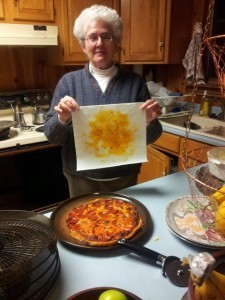


Published on December 31, 2014 16:51
December 28, 2014
Boxing Week Sale at Book View Cafe

Book View Cafe offers many yummy ebooks at half off -- including some of mine (Jaydium, Northlight, Azkhantian Tales, and Ink Dance: Essays on the Writing Life).
Downloading is simple (if I can do it, anyone can), and there are step-by-step instructions on how to load the files on your ereader. Plus, the book files will stay on your computer, yours forever.
Enjoy!
Published on December 28, 2014 11:44



